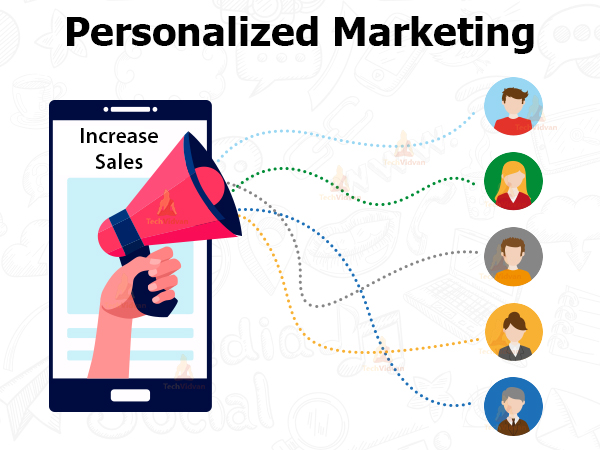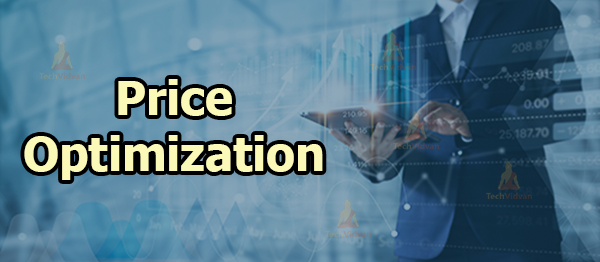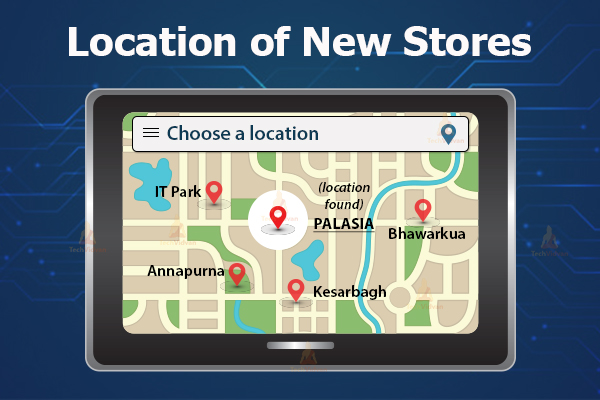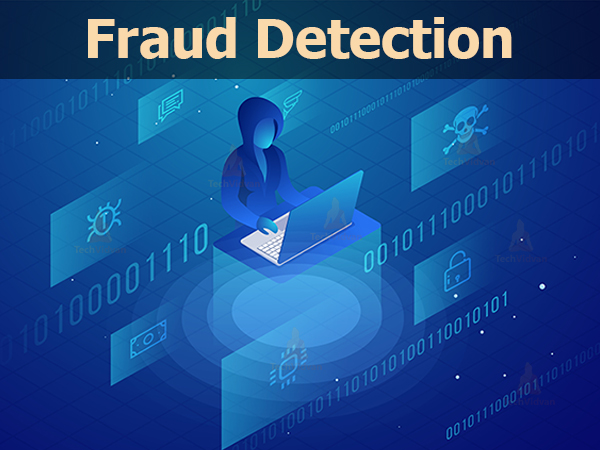Top 10 Data Science Use Cases in Retail [Case Studies Included]
The key to success in the Retail Industry is the ability of retailers to understand the customers’ choices. Their preferences, predicting sales and managing the overall expenses.
Nowadays, it has become very difficult to understand the mentality of millions of customers around the globe and sell your products to them. That’s the reason retailers started using Data Science in retail and Data Science comes into the frame.
Today, Data Science has a huge impact on the Retail Industry in many different ways. There are endless possibilities offered by Data Science to the Retailers. The main goal behind the Retail Industry to employ Data Science in retail is to match the users increasing expectations.
The Retail Industry is generating a large amount of customer data. Data Science helps to gain insights from this data about the customers and the market trends. The efficient use of this information will enable the industries to take some important data-driven decisions at the right time. Retailers can build various strategies to influence customers by analyzing the data.
In this Data Science in Retail article, we are going to explore the top Data Science use cases in the Retail Industry.
Data Science Use Cases in Retail
- Recommendation Systems
- Personalized Marketing
- Price Optimization
- Inventory Management
- Implementing Augmented Reality
- Location of New Stores
- Customer Sentiment Analysis
- Utilizing Social Media
- Fraud Detection
- Merchandising
Let’s discuss in detail these use cases of Data Science in retail.
1. Recommendation System
The recommendation system works on the basis of the previous history of the customer. It helps retailers to understand customer preferences and give them related recommendations while they are surfing the internet.
Recommendation Engines generally makes use of either collaborative or Content-based filtering. In this process, the past choices made by the customers and their preferred products are taken into consideration. Using this information, the recommendation engines apply various algorithms. Then it figures out some similar suggestions and offers various goods and services to the users accordingly.
Providing recommendations ultimately helps in improving the sales of the Industry.
2. Personalized Marketing
The retailers have been making a profit out of personalized marketing for years. The process involves collecting a large amount of data from millions of customers’ transactions, then analyzing it for predicting the customer’s choices or decisions in the future. This analysis is done on the basis of the likes, dislikes, and reviews of the customers on various products.
It will help retailers to take some important decisions regarding the pricing policies and providing personalized recommendations to the customers.
The insights extracted from the data help the industries to improve their development strategies, marketing techniques, and their sales.
3. Price Optimization
According to PWC ( PriceWaterhouseCoopers ), 60% of the total consumers believe that the main reason behind purchasing any product is its price.
Data Science has introduced new approaches to solving this problem. The various price optimization techniques help the retailer to identify the appropriate prices for their products.
Mystery shopping, geographical location details, customer segmentation, etc. are some of the tools that are used for price optimization.
The different algorithms used by the price optimization model performs the real-time analysis of the customer response to prices, discounts, sales on festivals, marketing campaigns, etc.
For example, one of the global leading multinational industries, Walmart has developed its own data analytics hub which is known as Data Cafe. The Data Cafe is fed up with more than 40 petabytes of customers’ data which helps them in understanding the market trend. This advanced analysis indicated the grocery team of Walmart that the sale of a particular item is suddenly reduced because of its irrelevant prices.
Thus, this algorithm alerts them whenever there is a sudden decrease in the sales of a product so that appropriate actions can be taken.
4. Inventory Management
The retailers aim to fulfill the customer needs at any instant of time.
Inventory Management involves ensuring the availability of products for sale at any given point of time. The retailers can use Data Science for predicting the demand level and maintain a safety buffer to deal with the changing demand.
Forecasting the demand will help retailers to keep additional products in stock for providing services to customers in the time of crisis.
Various advanced Machine Learning algorithms are employed to build models. They have the ability to determine the various trends and relationships between the different aspects of the supply chain. These algorithms help the retailers to keep the products in stock according to upcoming sales patterns.
5. Implementing Augmented Reality
The Retail Industry is slowly adapting to the idea of augmented reality for providing the customers with the experience of the product without actually owning it.
One of the leading Swedish companies, IKEA furniture, and home accessories is enabling the users to scan the products. The customers can scan the products which they like and place them virtually in the house for experiencing its original look. This will help them to feel the product by using image recognition technology.
The consumers can clear their doubts regarding the color, size, etc. before purchasing the product. This helps the customers to be sure and make a better purchasing decision. So, the companies have to bear lesser returns and negative sales.
6. Location of New Stores
Data Science proves to be an efficient tool for selecting the appropriate location for setting up a new store. Taking such decisions requires the analysis of a large amount of data such as the customer data available online, market trends in that area, the location of the other nearby shops, etc.
The algorithm takes all these factors under consideration during analysis. Then it evaluates the results in such a way that helps retailers to take various decisions regarding the location of the new store.
7. Customer Sentiment Analysis
Customer Sentiment analysis is not just limited to Retail Industry but also plays a very significant role in many other industries. The implementation of Data Science in retail has made it much simpler.
Customer sentiment analysis is performed by using several complex Machine Learning algorithms. The algorithm works on the customer data that is collected through various social media platforms and online service feedbacks. So that they can understand the customer’s attitude towards the product.
This analysis makes use of language processing for identifying the words that show either a positive or a negative attitude of the customer. All the detected customer sentiments are analyzed and the output represents the overall sentiments of the text.
8. Utilizing Social Media
Social Media is much more than just a medium of connecting with your friends. It provides a large amount of customer data to the retailers which helps them to understand the purchase pattern, customer behaviors, and trends.
But while extracting this data you should not violate the privacy policy of the customers.
For example, Nordstrom, is a leading fashion retailer in the United States. It explores various social media platforms like Facebook, Twitter, Instagram, etc. to get information about the most popular products and offer them in its stores.
They are using NLP ( Natural Language Processing ) for collecting the data and different Machine Learning algorithms for extracting such meaningful insights from it.
9. Fraud Detection
One of the most important factors affecting the success of the industry is gaining the customer’s trust. But some Fraud activities might destroy that valuable trust of the customers for life-time that will be a huge loss for the industry.
Data Science in retail helps to protect the company’s reputation. Fraud detection is becoming a challenging problem for retailers.
After bearing some great financial losses, the companies are now taking the help of several Machine Learning algorithms and deep neural networks. This enables them to always keep a check on all the activities and capture any Fraudulent activities. These algorithms not only detect fraud but also help in predicting future fraudulent activities.
10. Merchandising
Merchandising refers to every activity that helps you to promote and sell your product when the customer visits your store. Thus it became an integral part of the retail industry.
Presenting the products in a visually desirable sight can help in manipulating the customer’s decision while purchasing any product and encourage more purchases.
Various merchandising techniques include arranging products effectively on the shelves, attractive packaging, presentation of the products, attractive prices ( discounts ), providing gifts, etc.
All these merchandising techniques are inspired by the various insights extracted from the customer data by applying Data Science.
Companies Using Data Science in Retail
Now, let’s see how leading companies are using Data Science in retail. See some of the case studies that will demonstrate how Data Science is helping the Retail industries to take some important data-driven decisions.
Data Science in Retail Case Studies
1. Amazon
Amazon is one of the leading online retailers. It enables users across the globe to shop millions of products anytime and anywhere.
Amazon is taking the help of Data Science for inventory management. Whenever we want to buy something online from Amazon we visit the website, search for the item and add that item to our cart. After we add that item into our cart, Amazon starts giving us suggestions related to some similar products.
With the increasing demands of the customers, they keep adding the products to fulfill the customers’ needs at the right time. All this is done by analyzing a large amount of customer data and predicting future demand patterns.
2. Argos
Argos, which is one of the leading retailers in the United Kingdom, offers a wide range of toys, home furnishing, and personal care products.
In 2013, the company wanted to encourage digitized marketing and proposed a big project aiming to open around 53 new digital stores across the United Kingdom. The project involved a number of challenges for the company. The biggest challenge was to know how the customers will react to this change.
For solving this problem, they started tracking and monitoring what customers are saying about them on various social media platforms.
A platform named Bandwidth provided Argos with the customers’ social media data. It helped in performing customer sentiment analysis by offering various advanced features.
Argos extracted many important insights using this data such as customer’s attitude towards the change, the difference in their opinions according to age, gender, etc. They concluded that the male population accepted the change wholeheartedly but the case was not the same for the female population.
All this information helped them to take suitable actions to meet the customers’ expectations and increase their profit.
3. Target Corporation
Target Corporation is the second-largest store retailer in the USA. It is one of the leading retailers and has a number of stores all around the USA.
Target Corporation applied Data Science in a very interesting way to deal with some of their business problems. The company keeps the records of all the customer data such as what they purchased, whether they used any card, responses to the survey conducted, support issues, etc. in the guest ID. They also collected some additional details like customer’s age, religion, educational background, marital status, no. of children, income and job details.
Some other personal details like when you last moved, are you divorced, etc.
After analyzing this large amount of data, the insights gained by Target indicated to them the purchase pattern of pregnant women in the different phases of their pregnancy. They concluded that in the initial period of pregnancy, the women purchased various supplements for calcium, magnesium, and zinc. After some months they start purchasing oversized jeans, sanitizers, etc.
This information helped Target to provide personalized product suggestions to that specific group of customers.
In this way, Data Science in retail proved to be a milestone for Target and their revenue increased from 44 billion dollars to 67 billion dollars.
Summary
The main aim of all the retail industries is to fulfill customer requirements. There are many possible ways of doing that but Data Science in retail suggests the best possible way. It helps retailers to understand exactly what the customers are expecting from them.
The increasing customer data provides a number of opportunities for retailers to use this data for their growth.
Data Science in retail enables retailers to take the right decision regarding the various different aspects of the Retail Industry at the right time.
We hope you liked TechVidvan’s Data Science in Retail article.






